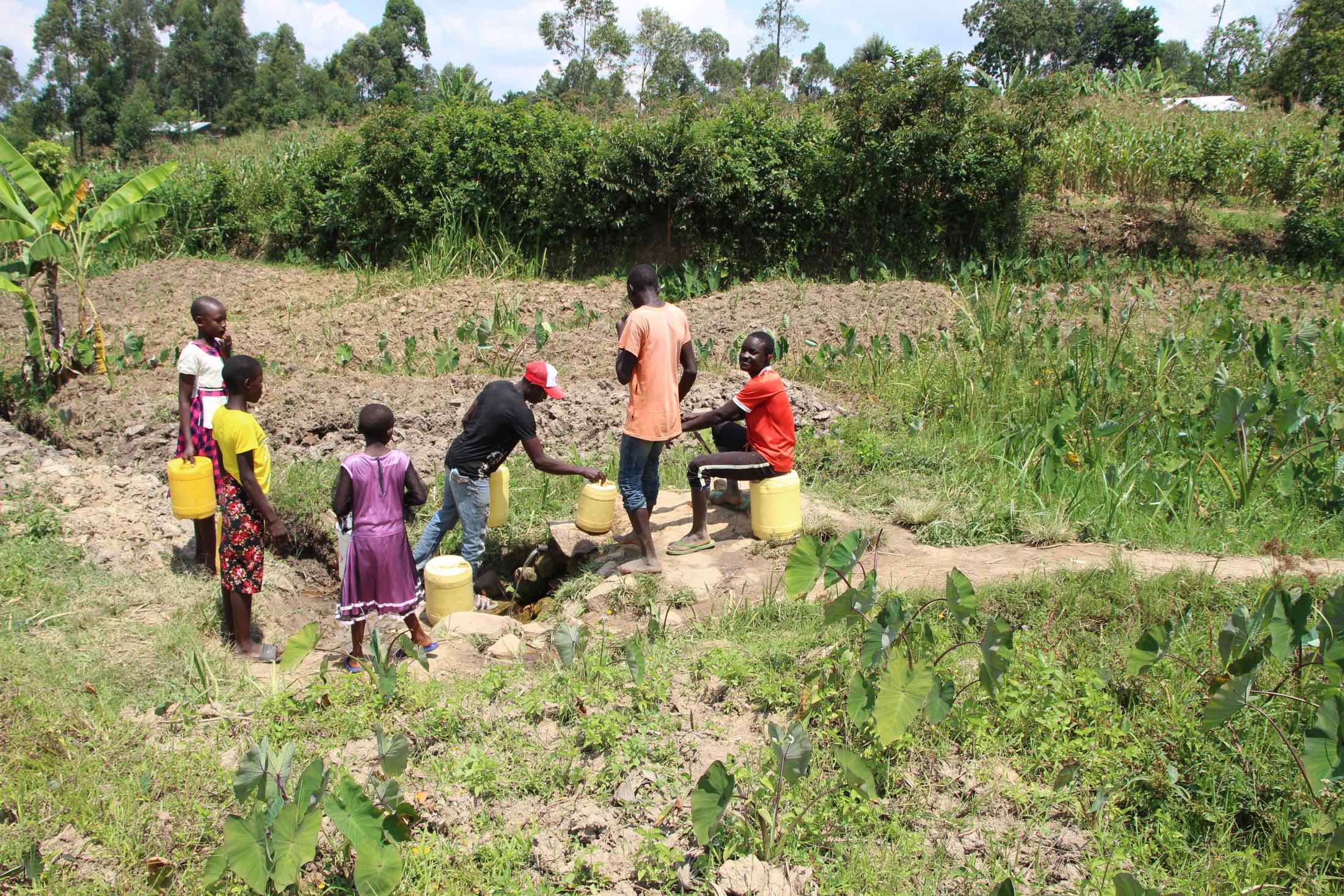Shiana community in Kakamega County of Western Kenya is home to the Masiache spring that serves more than twenty households of 175 people.
Most community members have semi-permanent homes and farm sugarcane to earn their living. Some are also dairy farmers and part of a local cooperative group. They collect their milk every morning and evening and sell it at an agreed price. Then money is collected at the end of the month, and they can do some development projects together.

Those who use this water point are forced to either wake up very early in the morning or head to the spring late in the evening to collect water to avoid long lines, especially during the dry season when other springs around the area go dry.
"I have been punished at school because of not completing my assignments. This is because when I come back from school, I need to help my grandmother get water, and at that time, the spring is overcrowded; hence a lot of time is wasted," said Centrine B., 12.
The spring is not protected and is open to contamination, thus endangering the lives of the water users. Community members often waste time and money treating waterborne illnesses due to drinking from the unprotected spring.
"I have spent a lot of money on medication treating typhoid, among other waterborne diseases. I will be the happiest person if our spring will be protected. It will be a relief from big hospital bills," said Flavian Mungeresa, 42.
What We Can Do:
Spring Protection
Protecting the spring will help provide access to cleaner and safer water and reduce the time people have to spend to fetch it. Construction will keep surface runoff and other contaminants out of the water. With the community’s high involvement in the process, there should be a good sense of responsibility and ownership for the new clean water source.
Fetching water is a task predominantly carried out by women and young girls. Protecting the spring and offering training and support will, therefore, help empower the female members of the community by freeing up more of their time and energy to engage and invest in income-generating activities and their education.
Training on Health, Hygiene, COVID-19, and More
To hold trainings during the pandemic, we work closely with both community leaders and the local government to approve small groups to attend training. We ask community leaders to invite a select yet representative group of people to attend training who will then act as ambassadors to the rest of the community to share what they learn. We also communicate our expectations of physical distancing and wearing masks for all who choose to attend.
The training will focus on improved hygiene, health, and sanitation habits in this community. We will also have a dedicated session on COVID-19 symptoms, transmission routes, and prevention best practices.
With the community’s input, we will identify key leverage points where they can alter their practices at the personal, household, and community levels to affect change. This training will help to ensure participants have the knowledge they need about healthy practices and their importance to make the most of their water point as soon as water is flowing.
Our team of facilitators will use a variety of methods to train community members. Some of these methods include participatory hygiene and sanitation transformation, asset-based community development, group discussions, handouts, and demonstrations at the spring.
One of the most important issues we plan to cover is the handling, storage, and treatment of water. Having a clean water source will be extremely helpful, but it is useless if water gets contaminated by the time it is consumed. We and the community strongly believe that all of these components will work together to improve living standards here, which will help to unlock the potential for these community members to live better, healthier lives.
We will then conduct a small series of follow-up trainings before transitioning to our regularly scheduled support visits throughout the year.
Training will result in the formation of a water user committee, elected by their peers, that will oversee the operations and maintenance of the spring. The committee will enforce proper behavior around the spring and delegate tasks that will help preserve the site, such as building a fence and digging proper drainage channels. The fence will keep out destructive animals and unwanted waste, and the drainage will keep the area’s mosquito population at a minimum.

 Protected Spring
Protected Spring
 Rehabilitation Project
Rehabilitation Project







































